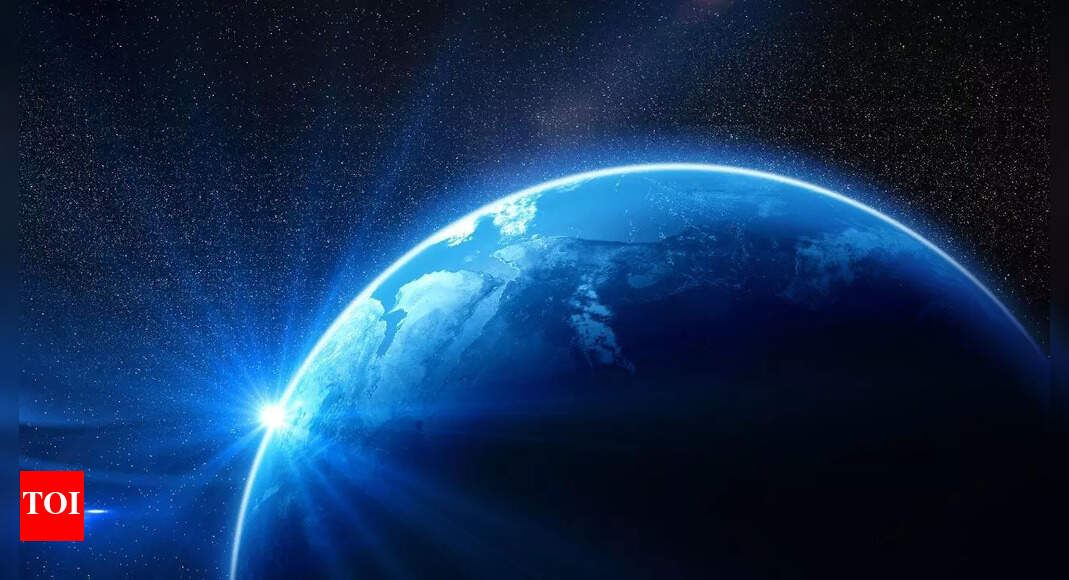In a significant step forward in the search for distant worlds, astronomers have discovered TOI-1846 b, a newly identified super-Earth exoplanet that may be rich in water. Located just 154 light-years away, this planet is nearly twice the size of Earth and orbits a cool red dwarf star. Though not considered habitable due to its high temperatures, TOI-1846 b’s dense, water-rich composition and close orbit offer valuable insights into the formation and evolution of rocky planets beyond our solar system. The discovery was made using data from NASA’s Transiting Exoplanet Survey Satellite (TESS) and confirmed with advanced ground-based observations. This planet adds to the growing catalogue of super-Earths that continue to reshape our understanding of planetary diversity in the galaxy.
New super-Earth discovered orbiting red dwarf just 154 light-years away
The new water-rich exoplanet, nearly twice the size of Earth, is orbiting a red dwarf star 154 light-years away. Named TOI-1846 b, this super-Earth may offer insights into the formation and evolution of rocky planets beyond our solar system. The discovery, detailed in a recent study published on the arXiv preprint server, was led by Abderahmane Soubkiou and his team at the Oukaimeden Observatory in Morocco.The planet was initially detected through NASA’s Transiting Exoplanet Survey Satellite (TESS) and later confirmed using a combination of ground-based photometry, high-resolution imaging, and spectroscopy.
TOI-1846 b: A water-rich super-Earth with extreme heat and close orbit
According to the reports, TOI-1846 b has a radius of approximately 1.792 times that of Earth and is about 4.4 times more massive. It orbits its host star once every 3.93 days, indicating an extremely close and swift orbit. The planet’s equilibrium temperature is estimated at 568.1 Kelvin (roughly 295°C), ruling out the possibility of surface habitability under known Earth-like conditions.Despite its high temperature, its size and density suggest a potentially water-rich composition, making it of interest to exoplanet researchers. This characteristic positions it among a growing class of rocky exoplanets that may contain substantial water content, possibly beneath thick atmospheres or layered beneath rocky crusts.
How astronomers confirmed TOI-1846 b as a genuine super-Earth
To validate the planet’s existence, the team relied on a robust set of techniques:
- TESS data captured the planet’s transits.
- Ground-based multicolor photometry helped refine its radius and orbital data.
- High-resolution imaging and spectroscopy confirmed that the transit signal was planetary in nature and not a false positive.
These observations collectively confirmed that TOI-1846 b is a genuine super-Earth, orbiting a relatively small and cool red dwarf star.
TOI-1846 b faces atmospheric study challenges due to low TSM score
Researchers assessed the planet’s Transmission Spectroscopy Metric (TSM) — a measure of how suitable a planet is for atmospheric study. TOI-1846 b scored a TSM of 47, which falls below the benchmark value of 90 typically used for sub-Neptune-sized planets. This suggests that its atmosphere may be challenging to analyze with current instruments.However, astronomers still consider TOI-1846 b a compelling candidate for future study, especially using radial velocity (RV) methods with high-precision instruments like MAROON-X. These observations could help refine its mass and reveal its internal structure and water content.
TOI-1846 b vs HD 20794 d: How super-Earths differ in habitability and structure
TOI-1846 b joins a growing catalog of recently discovered super-Earth exoplanets. For instance, earlier in 2025, astronomers identified HD 20794 d, a planet located just 20 light-years away, with a mass nearly six times that of Earth. Unlike TOI-1846 b, HD 20794 d lies within its star’s habitable zone, although its elliptical orbit may complicate the possibility of stable surface water.While TOI-1846 b is too hot to support life, it remains a valuable case study for astronomers seeking to understand planetary composition, water retention, and the atmospheric evolution of rocky worlds.
What TOI-1846 b could reveal about water-rich exoplanets
Though not habitable, TOI-1846 b’s possible water-rich interior, proximity to Earth, and detailed observational data make it a key object of interest. As telescope technology improves, particularly with next-gen observatories like the James Webb Space Telescope (JWST) and upcoming ground-based extremely large telescopes (ELTs), TOI-1846 b could play a role in shaping future models of planetary formation and composition.
About the star orbiting around TOI-1846
The star around which TOI-1846 b orbits is a red dwarf, with just 42% the mass of our Sun and approximately 0.4 solar radii. It is estimated to be around 7.2 billion years old, making it older than the Sun. Its relatively cool effective temperature of 3,568 K is characteristic of low-mass stars, which are known to have long lifespans and stable radiation output — ideal for exoplanet detection missions.Also Read | Is your brain 15 seconds behind? Study reveals you’re seeing the past, not the present
